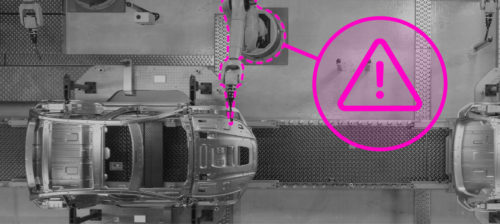The long, slow takeoff start to gain momentum
Those manufacturers committing to ride out the storms and endure the turbulence are coming to trade shows and going to Websites and picking up this month’s issue of Plant Engineering looking for solutions to the problems they have and to optimize their operations.
One of the contradictions in my life is that I love to travel and hate to fly. I enjoy getting out to trade events and plant floors to see first-hand how manufacturing is growing, changing and evolving. To do this, I have to leave the nice, cushy command center here at Plant Engineering and venture out. Since most of those places are far outside our Chicago area base of operations, it requires me to get on a plane and go.
Flying is an act of faith for me. I trust the laws of physics and aerodynamics that allow a 200-ton plane to fly 600 mph at 38,000 feet aren’t somehow repealed as I’m somewhere in the air over America’s heartland. I trust the two people in the front of the plane – the guys with the wings on their lapels and the crew cuts and the swaggering demeanor of a pilot – actually know what they are doing.
That faith is tested on nights like the one I had this month coming back from Orlando in the aftermath of one storm. The air was unstable, there was rain in the area, and while we were leaving a little later than we wanted to allow heaviest weather to pass, it was still going to be a rocky ride.
But I and my fellow passengers – young families and business types and one remarkably calm baby who slept in peace next to me throughout the entire 2-hour flight – we all got on the plane, confident that we were going to get to our destination, overcoming the bumps by staying on course, trusting our partners. We had done it all before.
One of the ways we managed to get out of Orlando, despite the turbulence, was for the pilots to take us on a long-low, slow takeoff from the airport. Going too high too fast might expose us to more bumps that some of us were ready to absorb. It was the smart way to get us moving to our destination. It minimized the bumps and took us smoothly through the clouds and allowed us to get above it all. It was still a little bumpy up there, but we’d hit our speed and picked up momentum and got to our destination.
Welcome to manufacturing on the cusp of the second decade of the 21st Century.
It’s a long, slow climb back. But it is a climb – unmistakable and gaining momentum even as we bump our way through the turbulence. Traffic at trade events I’ve been to this fall has been nothing short of remarkable. In many ways, it was just like the good old days of trade shows, where you had to flight your way down the aisles to get close to the innovations in products and processes available at the shows.
November’s Pack Expo – they should have called it Packed Expo – and Automation Fair were two such events. Both delivered eyeballs to the new innovations available in the market, and those innovations found people eager to consider them. Those manufacturers committing to ride out the storms and endure the turbulence are coming to trade shows and going to Websites and picking up this month’s issue of Plant Engineering looking for solutions to the problems they have and to optimize their operations.
The importance of this shouldn’t be overlooked. Many had written off the American manufacturer as a dying business model – unsustainable and unable to get back up off the ground. Never mind the strength of American manufacturing in the global economy is crucial to the growth of the world economy. Never mind that many people ran their successful campaigns in November on the idea that not enough was being done to stimulate jobs and strengthen manufacturing.
Now we are seeing signs that the low, slow takeoff pattern is sustainable. We can continue to grow manufacturing, not like a rocket blast (ironically, the space shuttle was supposed to blast off the same day I came home from Orlando, but weather scrubbed the launch) but with control, a clear plan for the future and a way to build momentum while minimizing the turbulence.
There will still be bumps. There will still be delays – after all, everyone wants to get to the same destination in manufacturing, and there’s room for everyone to get there. Sorting out all the traffic and getting everyone landed will take some coordination.
But we’re gaining ground in that long, slow takeoff. We’re getting closer to home. I watch the process unfold, still aware of the bumps and still nervous about the process. I don’t think we can ignore the past bumps. But maybe going through the experience makes us better able to understand the bumps and the best ways to overcome them.
I gain confidence with every flight. I am confident in the underlying structure of engineering that put the plane together, confident in the leadership that helps direct the strategy for the flight and confident that we’ve been through the worst of the bumps. If they do come again, we’ll know how to handle them.
When we do, I’ll start sleeping like a baby.
Do you have experience and expertise with the topics mentioned in this content? You should consider contributing to our CFE Media editorial team and getting the recognition you and your company deserve. Click here to start this process.





